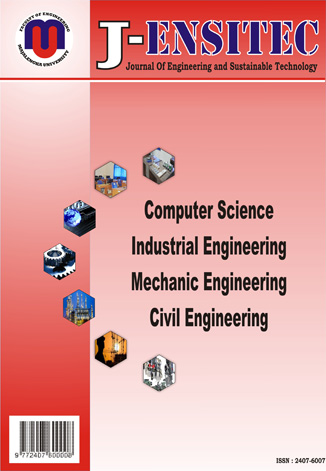PREDIKSI OPTIMASI DIMENSI BALOK KOLOM BANGUNAN MASJID DENGAN METODE ARTIFIAL NEURAL NETWORK
indonesia
DOI:
https://doi.org/10.31949/jensitec.v8i02.2463Abstract
Indonesia is the confluence of three of the world's major plates, therefore a lot of plate activity occurs so that earthquake intensity often occurs. The earthquake resulted in many casualties, this is because many building structures do not meet the requirements of earthquake-resistant buildings. The structure of mosque buildings in Lombok has many towering mosque towers. Many mosque buildings in Lombok do not apply the earthquake-resistant building principle, namely strong column weak beam, so that the average mosque building collapses is the soft story type. The research method used to optimize the dimensions of the columnar beam in this study there are two methods, namely optimization using SAP 2000 and then optimization using Artificial Neural Network (ANN) modeling. The empirical equations obtained are three equations, namely the equation of a beam, a square column and a circle column. The percentage of error that occurs in the use of the empirical formula is 0.88%, so that the equation can be used to perform dimensional prediction calculations with different variations.
Keywords:
Optimization, Mosque Building, Artificial neural NetworkDownloads
References
[2] Makrifa, A. I. Optimasi Sudut Dalam Kuda-Kuda Baja Dengan Metode Artificial Neural Network. Avisena, 2019.
[3] Suryani, E., Ulfiyati, Y., & Afifuddin, M. N. Prediksi Nilai Kuat Tekan Mortar Dengan Pemodelan Artificial Neural Network (ANN) Dengan Pecahan Keramik. Handasah, 39-46, 2021.
[4] Kusumadewi, S. Neuro fuzzy edisi 2 : Integrasi sistem fuzzy dan jaringan syaraf. Yogyakarta: Graha Ilmu, 2010.
[5] SNI. rsa.ciptakarya. Retrieved from Disain Respon Spektrum, 2019: http://rsa.ciptakarya.pu.go.id/2021/index.php?pga=0.5000&ss=1.0837&s1=0.3913&tl=8&kelas=2&range=12#grafik
[6] SNI. Tata Cara Perencanaan Ketahanan Gempa Untuk Struktur Bangunan Gedung Dan Nongedung. Jakarta: Badan Standar Nasional, 2019.
Published
How to Cite
Issue
Section
License
Copyright (c) 2022 J-ENSITEC (Journal Of Engineering and Sustainable Technology)

This work is licensed under a Creative Commons Attribution-ShareAlike 4.0 International License.
An author who publishes in the J-ENSITEC (Journal of Engineering and Sustainable Technology) agrees to the following terms:
- Author retains the copyright and grants the journal the right of first publication of the work simultaneously licensed under the Creative Commons Attribution-ShareAlike 4.0 License that allows others to share the work with an acknowledgment of the work's authorship and initial publication in this journal
- The author is able to enter into separate, additional contractual arrangements for the non-exclusive distribution of the journal's published version of the work (e.g., post it to an institutional repository or publish it in a book) with the acknowledgment of its initial publication in this journal.
- The author is permitted and encouraged to post his/her work online (e.g., in institutional repositories or on their website) prior to and during the submission process, as it can lead to productive exchanges, as well as earlier and greater citation of the published work







